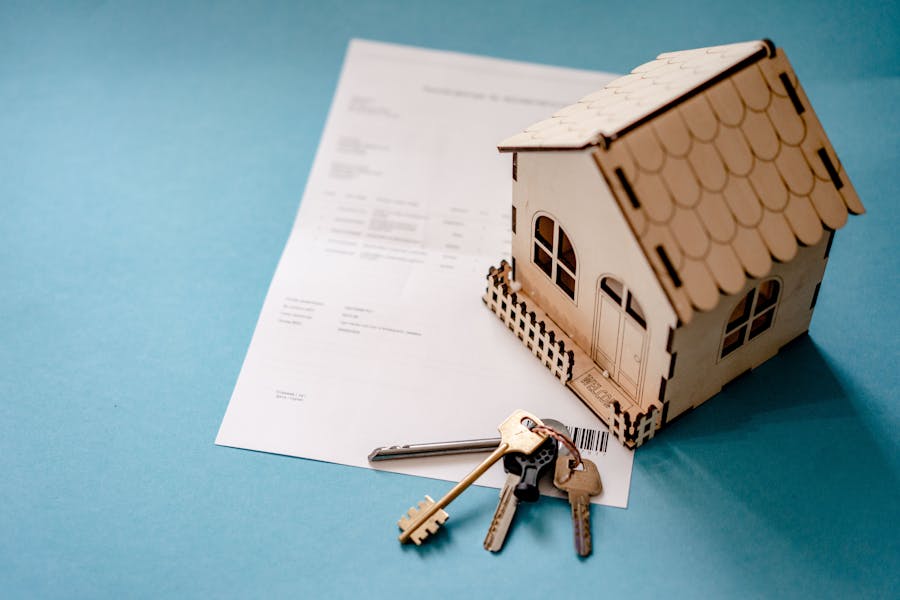Right-of-way property is a term often encountered in real estate, infrastructure projects, and land ownership disputes. If you’ve ever wondered who owns right-of-way property, you’re not alone. Right-of-way (ROW) is a legal right granted to an individual, company, or government entity to pass through or access property owned by another. This can be for purposes like utility access, public transportation, or road construction. Understanding who owns the right-of-way property, and how these rights are determined, is crucial for property owners and anyone involved in land use planning.
The concept of right-of-way can be confusing because it involves shared use of property and specific legal rights. While the property owner retains ownership of the land, the entity granted the right-of-way has the authority to use it for specific purposes. Whether you’re a property owner, a developer, or simply curious about how the right-of-way works, this article will cover everything you need to know.
In this comprehensive guide, we will explain the ownership structure of right-of-way property, how these rights are granted, what responsibilities each party holds, and how disputes are handled. By the end of the article, you will have a clear understanding of who owns right-of-way property and how these arrangements function.
Who owns right-of-way property?
The ownership of right-of-way property generally remains with the property owner, but a legal right is granted to another party—such as a government, utility company, or neighboring landowner—to access or use part of the land for specific purposes, such as road construction or utility installation. The right-of-way is an easement, meaning the landowner retains ownership but agrees to allow others to use the land for these purposes. The terms of the right-of-way are usually documented in a legal agreement.
What is Right-of-Way Property? A Comprehensive Overview
Right-of-way property refers to the legal right of one party to use another person’s property for a specific purpose, usually related to transportation, utilities, or infrastructure. This arrangement is often necessary for public projects, such as building roads, and railways, or installing utilities like gas lines or power cables.
The key element in right-of-way is that ownership of the land itself does not change. The property owner retains the title to the land, but a legal easement allows a third party to use a specific section of the property for a defined purpose. This might seem straightforward, but it can become complex depending on the specifics of the agreement and the land involved.
Who owns right-of-way property? The answer is two-fold: the original landowner still holds title to the land, but the entity granted the right-of-way (such as a utility company or government) has a legal right to use it. This can lead to questions about who is responsible for maintaining the right-of-way and what the property owner’s rights are.
Right-of-way can be granted through agreements between private parties or acquired by government agencies through a process known as eminent domain. It is important to understand the specific legalities involved to avoid disputes, particularly regarding land use and maintenance responsibilities.
Additionally, right-of-way property can apply to a variety of scenarios, including public access roads, driveways shared by multiple property owners, and utility easements for electricity, gas, or water lines.
Why Are Right-of-Ways Necessary?
Right-of-way easements play a critical role in the development of public and private infrastructure. Let’s explore why they are so important.
Facilitating Public Infrastructure Projects
One of the most common reasons for right-of-way agreements is the construction of public infrastructure. Roads, highways, railroads, and pipelines often need to cross through privately owned land to connect different areas.
Providing Utility Access
Utility companies frequently require right-of-way easements to install and maintain essential services like electricity, water, and gas. These rights ensure that the infrastructure can reach multiple properties while being maintained properly.
Shared Access Between Properties
In some cases, right-of-way easements are necessary for shared access between private properties. This often occurs in residential areas where multiple homes rely on the same driveway or access road.
Legal Protection for Landowners
Right-of-way easements offer legal protection for landowners by specifying how and when their land can be used by others. This protects both parties by preventing misuse and clarifying responsibilities.
Avoiding Legal Disputes
Establishing right-of-way easements helps prevent legal disputes between neighbors or private parties by clearly defining the rights and obligations of each party involved.
Who Owns Right-of-Way Property?
Right-of-way property ownership can be confusing because it involves multiple parties. The landowner retains legal ownership of the property, but a right-of-way easement gives others access. Here’s how it works:
- Landowner Retains Title: The property owner continues to hold the deed to the land, meaning they legally own the property.
- Right-of-Way Holder Has Usage Rights: The entity or individual granted the right-of-way has the legal right to use a portion of the land for specific purposes, such as constructing a road or utility line.
- Easement Terms Define Boundaries: The right-of-way easement is typically documented in a legal agreement, which defines the boundaries, use cases, and any responsibilities the right-of-way holder must meet.
The right-of-way does not transfer ownership of the land, but it does place certain restrictions on how the property can be used. It’s important to understand that the property owner cannot interfere with the rights granted under the easement.
How is Right-of-Way Property Acquired?
Right-of-way property can be acquired in several ways. Here are the most common methods:
- Negotiated Easements: In many cases, right-of-way agreements are negotiated between the property owner and the entity requesting access. This could be a private utility company, a municipality, or a neighboring landowner.
- Eminent Domain: Governments have the authority to acquire private property for public use through eminent domain. This process is used to obtain right-of-way for roads, highways, and other public infrastructure projects.
- Prescriptive Easements: A prescriptive easement occurs when a party uses someone else’s land for an extended period without permission. If this usage continues without interruption, they may acquire a legal right-of-way.
- Deed or Land Agreement: Some properties come with a right-of-way already established in the deed. This is common in rural areas where access to roads or shared driveways is granted by previous landowners.
How the right-of-way is acquired affects both the rights and responsibilities of the property owner and the right-of-way holder.
What Responsibilities Come with Right-of-Way Property?
Who Owns Right-of-Way Property? Understanding Responsibilities
Both the property owner and the entity holding the right-of-way have responsibilities to uphold. Let’s explore these roles:
Property Owner’s Responsibilities
The property owner must ensure that the right-of-way is accessible and free from obstructions. For example, if a utility company holds a right-of-way to maintain power lines, the landowner cannot build structures or plant trees that interfere with access.
Right-of-Way Holder’s Responsibilities
The right-of-way holder must use the property as outlined in the legal agreement. For example, a municipality using the right-of-way for a road must ensure it is maintained properly and safe for public use.
Maintenance of the Right-of-Way
In most cases, the party holding the right-of-way is responsible for maintaining it. This includes repairs, upkeep, and ensuring the area remains safe.
Resolving Disputes
If there is a dispute over the use of the right-of-way, the terms of the easement agreement will dictate how it should be resolved. Legal action may be necessary if either party violates the agreement.
Conclusion
When asking who owns right-of-way property, it’s important to recognize that ownership remains with the property owner, but specific usage rights are granted to another party. Right-of-way easements allow for public and private infrastructure projects, utility access, and shared use between properties. Understanding the legal responsibilities and how right-of-way property is acquired can help both property owners and right-of-way holders navigate this complex area of real estate law.
FAQ’s
Q. Can a property owner sell land with a right-of-way?
A. Yes, a property owner can sell land that has a right-of-way easement. The right-of-way will continue to apply, and the new owner must abide by the terms of the easement.
Q. Who maintains a right-of-way?
A. The party granted the right-of-way is typically responsible for maintaining the area, although this may vary depending on the easement agreement.
Q. Can a property owner block a right-of-way?
A. No, the property owner cannot block or obstruct a right-of-way if an easement has been granted. Doing so could result in legal action.
Q. How is a right-of-way recorded?
A. A right-of-way easement is usually recorded in public land records or deeds. This ensures it is legally binding and enforceable.
Q. Can a right-of-way be removed?
A. A right-of-way can be removed if both parties agree to terminate the easement or if it is no longer necessary. This usually requires a legal process to update land records.




